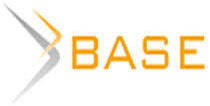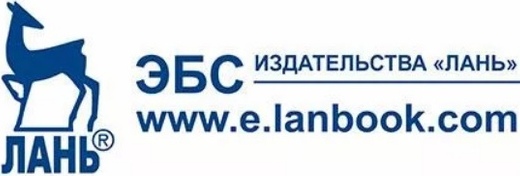COOPERATION IN THE FIELD OF TOURISM ACCORDING TO «ALMATY – BISHKEK CORRIDOR INITIATIVE (ABCI)»
Abstract
The paper introduces a problem of formation and development of Almaty – Bishkek Corridor Initiative (ABCI). There were indicated that tourist corridors operate most effectively in terms of preferential treatment common customs, economic and cultural space. In addition, there were given general characteristic of the corridor Almaty – Bishkek. It is noted that the purchase and sale of services between the cities of Almaty and Bishkek, including trade and tourism, prevails now in direct bilateral economic exchange. There were provided the principles of the establishment and operation of the tourist corridor Almaty – Bishkek. Since Kazakhstan and Kyrgyzstan have long been a part of the Soviet Union, most of the characteristics are the similar. There were shown barriers for the development of tourist services in the corridor Almaty – Bishkek that appear due to different types of costs. There were determined the possible directions of work on the interaction of the Republic of Kazakhstan and the Kyrgyz Republic within the framework of the development of tourism on the corridor
Almaty – Bishkek. Nowadays in the world has been developed a wide range of approaches, methods and tools for the development of tourism corridors. They all require detailed study and then can be adapted and applied to the conditions of the corridor Almaty – Bishkek.
Keywords: Almaty – Bishkek Corridor Initiative (ABCI), tourist corridor, tourism, recreation, de-velopment, prospects
Introduction. The Tourist Corridor (TC) – a modern approach to the planning of recreation and tourism at regional, national and international levels. Its origins can be found in the XIX century, when travel became popular among the richest people by the train on the route «The Orient Express». The most famous of these is «Paris – Istanbul» (6 days / 5 nights). There are other similar examples: «The Eastern & Oriental Express» (Bangkok – Singapore), «The Orient Express» (Moscow – Beijing), “The Great South Pacific Express” (coast of Australia), «Rovos Rail» (South Africa and Namibia) and others. Modern tourist corridors are not always linked to the international railway lines. For example, in Europe there are The European Mozart Ways (Austria), The Royal Road (St-Petersburg – Helsinki), The Baltic and Azov Green path (St-Petersburg – Crimea), pilgrimage routes of the Middle Ages, the historical route of military raids and mass migrations.
Transport logistics of tourist corridor (TC) is based on a modern infrastructure, and the infrastructure of previous eras. Before the advent of railways and roads, people rode horses and walked from one village to another. Such paths were made among springs, wells and watering places, and their slopes were gentle, since horse carriages had no brakes. Roads went through the main streets with markets and religious objects, buildings and the best fairground, stalls and workshops.
TC is a progressive and integrated approach to the use of natural resources and cultural heritage, focusing on the inclusion of small and medium-sized businesses along the corridor defined in the manufacture of a wide range of tourism products and services. This does not develop competition, however it brings to cooperation, the development of common ideas and common style of tourist services, mutual entities of the tourist complex, tourism professionals, representatives of sectoral universities, research organizations and intellectuals. Brand TC forms the natural, historical, cultural and socio-economic attractors (attractive places and objects), an unusual way of life of local people, customs, celebrations and traditional way of life of previous eras and others.
TC operates most effectively under the regime of common customs, economic and cultural space. Organizing of material, financial, information and tourist flows are the guarantors of the fast turnover of capital and high-quality service. Modern TC is a combination of territorially related natural and economic systems, concentrating on the general direction as the main attractors and all the necessary transport for the traveler, and life-supporting infrastructure.
Main part. Almaty and Bishkek are connected by the highway with the distance of 237 km, and in a straight line – 194 km. There are numerous economic, cultural and historical ties between them. The cities are the largest in their respective countries: on 01.01.2016, the number of Almaty population was 1.7 million people, Bishkek – 958.5 thousand people (The Committee on Statistics of the NEM of the RK, 2015, 2016). Each city is characterized by a high level of per capita income in the country. The cities have a high similarity, and a huge potential for growth through regional cooperation. The Tourist component Almaty – Bishkek Corridor Initiative (ABCI) began to be discussed in the spring of 2016 in the evaluation of individual prospects and directions of cooperation in the economic corridor between the cities of Almaty (Kazakhstan) and Bishkek (Kyrgyzstan). The project was developed as a program of CAREC member (Central Asia Regional Economic Cooperation or CAREC), partner institutions which are the Asian Development Bank, the European Bank for Reconstruction and Development, the International Monetary Fund, the Islamic Development Bank, the United Nations Development Programme, the World Bank (CAREC Program, 2013-2016). The Memorandum of Understanding between Almaty and Bishkek city administration was signed on 11/06/2014 with the purpose of realization of initiatives. For the development of tourist ABCI component there are the following important tasks:
to promote research to establish a knowledge base for identifying areas of joint cooperation and coordination, including investments in infrastructure projects;
to provide a platform for the coordination of strategies for planning, sharing of information, experiences and ideas;
to develope innovative solutions and approaches for sustainable growth based on knowledge and experience;
promotion of cooperation between public authorities, associations of local government, business structures, scientific organizations, and development of public-private partnerships;
coordination of work in different aspects of corridor development, including strategic planning, urban infrastructure, innovation, technology, entrepreneurship, networking, promoting the development of key economic sectors;
cooperation in the field of spatial planning for the diversification and growth of economic clusters and investment (Almaty-Bishkek economic corridor, 2014: 3).
Technical analysis in order to identify opportunities for the development of ABCI was submitted to the CAREC Secretariat study. It covers three areas:
1) transport corridors in order to improve internal transport networks within Member States;
2) transit corridors to improve cross-border transport connections and the flow of goods;
3) economic corridors with the existing links, additional infrastructure, policies and institutions to promote economic activities in spatial clusters (cities) (Asian Development Bank, 2014: 65).
The joint working group in the first phase (2015–2016 years) should define the infrastructure, policies and institutional requirements for promoting ABCI. At the first meeting on December 22-23, 2014 in Bangkok (Thailand), there were identified the following areas for analysis: urban planning, agriculture, education, health, tourism, infrastructure, the growth of the material and technical base. The Asian Development Bank promotes technical and economic analysis in the work of the joint working group and identify potentially promising projects for financing, including the private sector and other partners
Materials and methods. The research is based on the general scientific and special methods that allow taking into account the specifics of the problem; the methods include some general scientific methods used in the analysis, systematization, abstraction, analogy, extrapolation. For particular methods category are target-oriented, structural-functional, processing and presentation of information.
Literature review. As information sources there were used texts, graphics, statistics and maps, which can be obtained from the Internet and library databases.
Most author's publications, official materials of international organizations have been researched.
It is especially necessary to note the following data sources: The Central Asia Regional Economic Cooperation Program (CAREC) (http://www.carecprogram.org/); State Project Institute «Kazdorproekt» (http://kazdor.com/); Asian Development Bank (http://www.adb.org/); Development Agency of Bishkek (http://cda.kg/ru/); Almaty City Administration (http://almaty.gov.kz/); The United Nations Commission on Sustainable Development (http://www.gdrc.org); the United Nations World Tourism Organization (http://www2.unwto.org/); The International Ecotourism Club (https://ecoclub.com/); The Tour Operators’ Initiative for Sustainable Tourism Development (http://www.toinitiative.org); The Global Sustainable Tourism Council (http://www.gstcouncil.org/); The Astana Economic Forum (http://astanaforum.org/2014/); online databases “EBSCO Information Services” (https://www.ebsco.com/), “The Scientific Electronic Library Online” (http://www.scielo.br), “ScienceDirect” (http://www.sciencedirect.com/), “Scopus” (http://www.scopus.com/), “SpringerLink” (http://link.springer.com/), “Taylor & Francis Group” (http://www.tandfonline.com/), “John Wiley & Sons” (http://eu.wiley.com/WileyCDA/), “Cambridge University Press”(http://journals.cambridge.org), “Oxford University Press” (http://services.oxfordjournals.org), “Web of Science, Thomson Reuters” (http://thomsonreuters.com/en.html).
Results and discussion. The basic idea of any TC is the concentration of tourist flows on the main areas that have the highest recreational-tourism potential and high-level arrangement. As a result, there will be formed an optimal mode of functioning of the enterprises of tourist and related facilities, as well as the depreciation of their products due to the emergence of synergy effects. The latter appear in the case of full harmonization of tourism policies among all stakeholders and interested parties of tourism business.
It can be defined as the general principles of operation and TC, depending on the specifics of the territory. Since Kazakhstan and Kyrgyz Republic have long been a part of the Soviet Union, most of the characteristics for which resembles (fig.).
Depending on the purpose of creation, the level of interaction between the interested parties in the establishment and nature of economic activity control TC can be transit (a transit corridor), fixed (a stationary corridor) or developing (a development corridor). The main purpose of transit TC is to create conditions for the smooth and efficient flow of tourists in a particular area of tourist destinations. Creating fixed TC is aimed at the introduction of favorable customs, fiscal, administrative, and other regimes and the provision of additional services to promote tourism in the regions or countries which it connects. Developing TC is focused on a system-forming role in the development of the territories which it passes. Its creation is linked to the project of development of branches of economy and social sphere of specific regions or countries. Thus, ABCI is difficult to attribute to any type of classification. Therefore, we can distinguish a special type of TC - mixed.
ABCI includes Almaty, Zhambyl regions in the territory of the Republic of Kazakhstan, Bishkek and Chui region partly in the territory of the Kyrgyz Republic, as well as, if we consider as a major attractor Issyk-Kul, partially Issyk-Kul region. The very international route “Almaty – Bishkek” includes the highway A2, the M39 motorway section (part of the part of the transport and logistics corridor “Western Europe – Western China”), a section of the motorway A365. In 2007, the three versions of the passage of the new route “Almaty Issyk-Kul” has been studied through settlements Mikhaylovka, Karabulak-Kemin (Bystrovka) and Kichi-Kemin. The optimal pre-determined route was through Mikhailovka, with the length of 280 km, including 90 km of the road that is expected to be built. One kilometer of the road and bridge over the boundary Shu river is located on the territory of the Kyrgyz Republic, after this part the international highway continues to the road “Bishkek-Balykchi”. A detailed feasibility study has not been elaborated.
The population density in the final localities of ABCI – Almaty and Bishkek makes up 2 317 and 5 100 persons per 1 km2 accordingly. In the territory of Almaty region – 8,5 persons per 1 km2, in the Zhambyl region – about 7,6 persons per 1 km2, Chu region – about 42,7 persons per 1 km2 (the materials of the study and prognosis of natural and man-made processes in the Kyrgyz Republic, 2015, 2016). 24,2 % of Almaty region’s population are city dwellers, this indicator in the Zhambyl region is 40,5 %, in the Chu region is 18 % (The Committee on Statistics of the NEM of the RK, 2015, 2016). Along the transport corridor within Almaty and Zhambyl regions equally with low density there can be observed a low level of economic activity. These territorial administrative units of Kazakhstan are predominantly agricultural. The specific gravity of agritourism in the gross regional product (GRP or state output) of Almaty region is 23,2 %, in Zhambyl region – about 16,9 %. The service sector takes 17,2 % of GRP in Zhambyl region (Smailov, 2014: 420). In the Chui region the specific gravity of agriculture (mainly, crop and dairy & meat production) in the GRP is 92,1 %. Other vital production services are food, construction and metallurgy. In the sector of production, construction, transport and communication sector one can observe a rise in the last decade. The specific gravity of services is 2,4 % GRP. In three areas of the Chui region near the Bishkek city there is a free economic zone, which has been functioning since 1995 and includes about 90 enterprises with investments from more than 20 countries and with 2500-3000 job places (The Information portal of the Chui oblast state administration, 2016: 18).
A purchase and sale of services between Almaty and Bishkek cities, including a trade, are predominated in bilateral direct economic exchange. Through Bishkek to Almaty formally and informally there is an export of fruits and vegetables, meat, livestock (cattle, horses, sheep). Tourism, health, education, finance are the other important sectors in the economic exchange of services between these cities. There are seasonal tourist flows from Kazakhstan to Issyk-Kul and ski resorts of Kyrgyz Republic, and tourists from Kyrgyz Republic use flights from the Almaty International airport and trains from the Chui station in Zhambyl region. According to specifics of economic activity, Almaty specializes in complicated, capital-intensive and expensive services (for instance, high-tech medical and instrument-making), and Bishkek in its turn offers alternative services based on qualified, but less expensive specialists (for example, higher education) and equipment (e.g., dental). Higher education is a vivid example of service exchange between Almaty (expensive and branded universities) and Bishkek (reasonable prices and good quality). Noticeable authority in service sector, which is exported from Bishkek to Almaty, have car repair services (The Asian Development Bank, 2014:17–18).
The barriers, which hinder the development of tourist services in ABCI have appeared as a result of several types of costs: tariff and non-tariff constraints, transport expenses, administrative obstacles, disagreements on contracts with transaction costs, financial problems, corruption, the cost of distribution into individual and group tourist products, the market structure of tourism sector (e.g., an Agreement on transport and accommodation, etc.). Under these conditions the main approaches to ensure the effective functioning of ABCI can become:
1) the formation of the coordinated tourism policy;
- the creation of a unified regulatory framework to ensure the development of recreation and tourism;
- the development of scientific and applied, methodological, human, institutional, technological and information support for the development of recreation and tourism;
- phased and targeted introduction for up-to-date technologies of cross-border tourism;
- formation of the complex interaction and cooperation of all tourism market’s stakeholders.
A vital priority in interaction between Kazakhstan and the Kyrgyz Republic in the development of products and services of TC and the achievement of strategic aims to increase investment attractiveness and competitiveness of recreation and tourism includes a fully coordinated arrangement of activities to build, upgrade and branding typical and unique types of recreation and tourism. Moreover, the joint development and implementation program of integrated development of ABCI on the main directions of service, including the development of tourist centers and approaches to them, allows to lay the foundation for long-term and successful actions to ensure the linking of investment plans of individual participants and neutralize the risks of the creation of “bottlenecks” within TC for individual member-states. Table shows the possible work directions in the interaction between the Republic of Kazakhstan and the Kyrgyz Republic within the framework of the tourism development in ABCI.
Table
Possible directions of work in the interaction between the Republic of Kazakhstan
and the Kyrgyz Republic within the framework of the tourism development in ABCI
Areas of work | Priorities of work |
Inventory and assessment of tourist infrastructure and service’s quality along the international transport corridor | ■□□ |
Elaboration of inventory and catalogue of tourist resources, facilities and infrastructure on the basis of peer review for their effective use | ■□□ |
Making a scheme of special recreational and tourist territory zoning | ■□□ |
Development of scientific support for a coordinated system of quality standards for the provided tourist services | ■□□ |
Developing cooperation mechanisms for practice-oriented training of tourism personnel (practitioners and academic mobility) | ■□□ |
Creating a common online resource with described tourist products (attractors) | ■□□ |
Development of the promotion program of tourist products in the domestic and international markets through electronic and print media and social | □■□ |
Creating a long-term, special, recreational and tourist territorial development scheme | □■□ |
Drawing up the unified strategy of human rights and interests protection by the coordination way of states activity in the ensuring of tourist’s safety | □■□ |
Working up the transboundary tourist routes in the border territories | □■□ |
Creation of the program for organizing of the route “ABCI Golden Ring” | □■□ |
Elaboration of international tourist and excursion itineraries to develop ecological and rural tourism | □□■ |
Elaboration of international tourist and excursion itineraries to places of important historical events and activities of prominent historical figures of the Kazakh and Kyrgyz people | □□■ |
Elaboration of “nostalgic” tours for the tourists from Kazakhstan, Kyrgyzstan and other CIS countries, who is living in other countries | □□■ |
Promotion of tourist opportunities for conducting the international ethnographic festivals | □□■ |
Formation of a portfolio of joint projects to preserve and extend the potential of tourist territory and to improve the effectiveness of conservation activities |
□□■ |
Note: ■□□ – a very high; □■□ – high; □□■ – mild. | |
For more detailed analysis of tourist component of ABCI and predicting the effectiveness, competitiveness of recreation and tourism there can be applied the following approaches:
- a direct assessment of data about the tourist complex’s object according to time and expenses for their improvement;
- a study of tourist flows based on the gravity model and on the determining of attractor’s opportunities according to threshold indicators;
- an assessment of price differentiation and price differences by identifying the behavior of comparative prices on objects of tourist complex.
Conclusion. A brief analysis of theoretical and practical aspects of the ABCI tourist complex’s formation indicates, on the one hand, the existing experience in this area, on the other hand, this raises the difficulty in studying this problem. Among the most important findings there should be noted the followings:
- it is well represented and is available to different information sources on the issue;
- TC – a progressive and integrated approach to use the natural resources and cultural heritage, which are oriented to business incorporation in the production of a wide range of tourist products and services with logistics based on modern and past historic periods of the infrastructure;
- TC brand is formed by natural, historical and cultural, social-economic attractors (attractive places and objects), unusual life style of local people, customs, celebrations and traditional ways of life of previous periods, as well as other specific characteristics;
- TC operates more efficiently, if is a combination of geographically related natural and economic systems, concentrating on the general direction as the main attractors and all the necessary transport and life-supporting infrastructure for the traveler;
- with the aim to implement ABCI, there was signed a memorandum of understanding between Almaty and Bishkek cities administrations, which includes a number of vital tasks for development of the tourist complex;
- buying and selling of services between Almaty and Bishkek cities, including trade and tourism, prevails now in the direct bilateral economic exchange;
- ABCI can be described as a special type of TC – mixed corridor;
- there are 10 principles of creation and functioning of ABCI;
- there are some barriers standing on the way of tourist service development in ABCI, which appear as a result of several types of costs;
- the main approaches to ensure the effective functioning of ABCI may include the formation of a tourism policy;
- the creation of a unified regulatory framework to ensure the development of recreation and tourism;
- the development of scientific and applied, methodological, human, institutional, technological and information support for the development of recreation and tourism;
- phased and targeted introduction for up-to-date technologies of cross-border tourism;
- formation of the complex interaction and cooperation of all tourism market’s stakeholders;
- there are 10 possible directions of work in the interaction between the Republic of Kazakhstan and the Kyrgyz Republic within the tourism development framework of ABCI;
- for more detailed analysis of tourist component of ABCI and predicting the effectiveness, competitiveness of recreation and tourism can be applied in direct evaluation of the data about the objects of tourist complex according to the time and expenses to their improvement;
- studying a tourist flows on the basis of the gravity model and defining the opportunities according to the threshold indicators;
- evaluating the differentiation of the price and price differences with identifying the behavior of comparative prices to tourist complex’s objects.
Conflicts of Interest: the authors have no conflict of interests to declare.
Информация о конфликте интересов: автор не имеет конфликта интересов для декларации.

















Reference lists
1. Committee on Statistics of the NEM of the RK: official statistical information, operational data (express information, bulletins) (2016) [Electronic resource]: – Access mode: http://www.stat.gov.kz/getImg?id=ESTAT116585 (date of access: May 10, 2016). Republic of Kazakhstan.
2. National Statistical Committee of the Kyrgyz Republic: official statistics, population, operational information (2016) [Electronic resource]: – Access mode: http://www.stat.kg/ru/statistics/naselenie (date of access: May 10, 2016). Kyrgyz Republic.
3. Almaty – Bishkek economic corridor CAREC Program (2016) [Electronic resource]: – Access mode: http://www.carecprogram.org/index.page=economic-corridor-development (date of access: May 10, 2016). Kyrgyz Republic.
4. Memorandum about understanding between Akimat of the Almaty city and Administration of the Bishkek City in initiative «Almaty-Bishkek economic corridor» (2016) [Electronic resource]: – Access mode: http://www.carecprogram.org (date of access: May 10, 2016). Kyrgyz Republic.
5. Operationalizing Economic Corridors in Central Asia: a case study of the Almaty Bishkek Corridor Program (2014) [Electronic resource]: – Access mode: http://www.carecprogram.org/ru (date of access: May 10, 2016). Kyrgyz Republic.
6. The first meeting of the Joint Working Group on the initiative of «Corridor Almaty – Bishkek» CAREC Program (2016) [Electronic resource]: – Access mode: http://www.carecprogram.org/ru/index.php?page=abci-meeting (date of access: May 10, 2016). Kyrgyz Republic.
7. Committee on Statistics of the NEM of the RK: official statistical information, operational data (express information, bulletins) (2016) [Electronic resource]: – Access mode: http://www.stat.gov.kz/getImg?id=ESTAT105375 (date of access: May 10, 2016). Kyrgyz Republic.
8. The materials of the study and prognosis of natural and man-made processes in the Kyrgyz Republic, Bishkek: Ministry of Emergency Situations of the Kyrgyz Republic (2016) [Electronic resource]: – Access mode: http://www.stat.gov.kz/getImg?id=ESTAT116587 (date of access: May 10, 2016). Kyrgyz Republic.
9. Smailov A. A (2014), Regions of Kazakhstan in 2014 // Committee on Statistics of the Ministry of National Economy of the Republic of Kazakhstan, p. 420. Republic of Kazakhstan.
10. Information portal of the Chui oblast state administration (2017) [Electronic resource]: – Access mode: http://gov.kg/chuy/ (date of access: May 10, 2016). Kyrgyz Republic.